Seafood product buyers tend to believe that the products they are purchasing are as described by the sellers. But, that isn’t always the case. Seafood products are sometimes intentionally labeled incorrectly for profit.
This is seafood fraud. Fraudulent actions like this threaten the safety of the food. From the FDA’s “Report on Seafood Fraud”
70% of seafood consumed in the US is eaten at restaurants. The products served at restaurants are generally lower quality than those sold in retail outlets and the sushi is especially appalling. Unless visiting a top-class sushi restaurant (where the prices are, of course, high), you can usually expect to be served the worst of the worst.
There isn’t much a consumer can do about this, but at the very least you can educate yourself on types of fish that are often substituted. If you were to order White Tuna or Red Snapper, you would very likely be served something else. Any shrimp ordered was probably farmed.
There are no laws regulating “Fresh” or “Organic” labels so don’t be fooled by these. In the same way, be suspicious when you see word combinations like “Great Sushi” or “Great Sashimi.” There is no such thing as “Great” in this sense.
By Larry Olmsted, a print columnist for two of America’s three national newspapers, Investor’s Business Daily and USAToday
*FDA・・・Food and Drug Administration
Related contents:
Things You Should Never Order From A Sushi Restaurant
We hope this information will be helpful.
Revision date: October 23, 2021

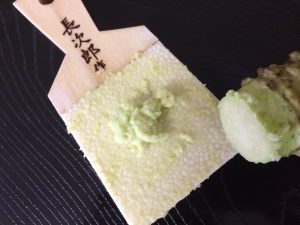
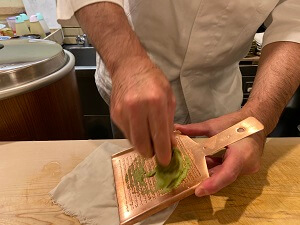
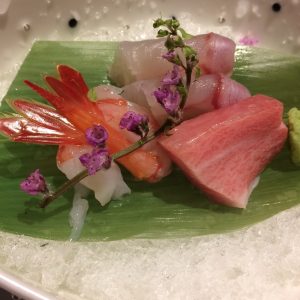 Thicker cuts of fish are used for sashimi than for sushi. Depending on the restaurant, the equivalent of three pieces of sushi may be used in one cut of sashimi. In other words, two pieces of sashimi is the same as six pieces of sushi. At a restaurant where one piece of medium fatty tuna sushi is priced at JPY 1000, simple arithmetic prices medium fatty tuna sashimi at JPY 6000. Just a small order of assorted sashimi often costs more than JPY 10,000.
Thicker cuts of fish are used for sashimi than for sushi. Depending on the restaurant, the equivalent of three pieces of sushi may be used in one cut of sashimi. In other words, two pieces of sashimi is the same as six pieces of sushi. At a restaurant where one piece of medium fatty tuna sushi is priced at JPY 1000, simple arithmetic prices medium fatty tuna sashimi at JPY 6000. Just a small order of assorted sashimi often costs more than JPY 10,000. 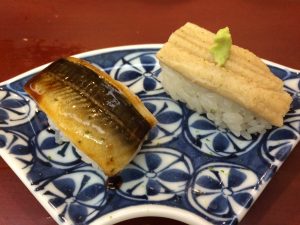
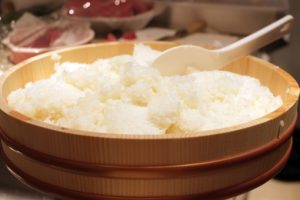 From the end of the Edo period through the Meiji period, rice was cooked using firewood and a pot. It is not easy to get the fire at the right temperature and the rice has to be cooked to the same texture regardless of where it came from or the size of the grains, so at the time the task required a skilled chef. Therefore, there were
From the end of the Edo period through the Meiji period, rice was cooked using firewood and a pot. It is not easy to get the fire at the right temperature and the rice has to be cooked to the same texture regardless of where it came from or the size of the grains, so at the time the task required a skilled chef. Therefore, there were 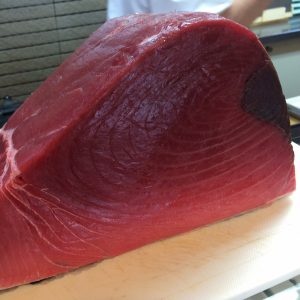 During the Edo period, tuna was not highly valued as a sushi topping and it was referred to as “
During the Edo period, tuna was not highly valued as a sushi topping and it was referred to as “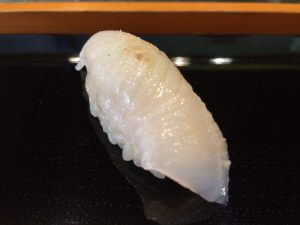 The balance between Shari (vinegar rice) and the topping is important in sushi. No matter how good the topping, the sushi won’t be good if the Shari isn’t right for it. More restaurants have been using red vinegar lately, but even if you use a Shari with a strong taste like red vinegar, the balance will be destroyed if the topping has a weaker flavor. Seasoning that goes well with various toppings that doesn’t stand out too much is ideal.
The balance between Shari (vinegar rice) and the topping is important in sushi. No matter how good the topping, the sushi won’t be good if the Shari isn’t right for it. More restaurants have been using red vinegar lately, but even if you use a Shari with a strong taste like red vinegar, the balance will be destroyed if the topping has a weaker flavor. Seasoning that goes well with various toppings that doesn’t stand out too much is ideal.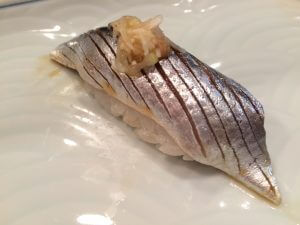
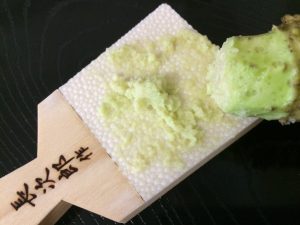 Wasabi
Wasabi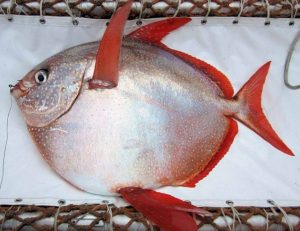 First of all, Opah belly meat with some fat is used for the tuna in Negi-toro (tuna minced with Welsh onion leaves). Opah is widely distributed in warm seas and it’s known to be inexpensive with a smooth taste. The price is less than 1/100 of the Pacific bluefin tuna and if possible Negi-toro made from Opah should be avoided.
First of all, Opah belly meat with some fat is used for the tuna in Negi-toro (tuna minced with Welsh onion leaves). Opah is widely distributed in warm seas and it’s known to be inexpensive with a smooth taste. The price is less than 1/100 of the Pacific bluefin tuna and if possible Negi-toro made from Opah should be avoided.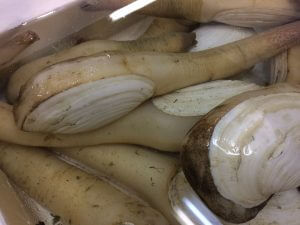 A premium sushi topping is the Mirugai clam (also called Hon-miru). This shellfish is characterized by its unique texture and taste. Instead the Japanese geoduck (Shiro-miru) is used, which sells for half the market price. However, the taste of the two is so similar that even Sushi Tsu has mistaken them, which is great news for dishonest dealers.
A premium sushi topping is the Mirugai clam (also called Hon-miru). This shellfish is characterized by its unique texture and taste. Instead the Japanese geoduck (Shiro-miru) is used, which sells for half the market price. However, the taste of the two is so similar that even Sushi Tsu has mistaken them, which is great news for dishonest dealers. In some cases a two-piece sushi dish you can get for JPY 100 at Kaiten-zushi (Conver belt sushi) can cost up to 2,000 for half the volume at a fancy restaurant. Many Kaiten-zushi establishments are part of large chains so costs are kept low by buying in bulk.
In some cases a two-piece sushi dish you can get for JPY 100 at Kaiten-zushi (Conver belt sushi) can cost up to 2,000 for half the volume at a fancy restaurant. Many Kaiten-zushi establishments are part of large chains so costs are kept low by buying in bulk. While different from fancy sushi restaurants that serve various seasonal fish and edomaeshigoto, Kaiten-zushi has its own merits and offers sushi at a much lower price. It’s really up to the customer what they hope to get from their sushi experience.
While different from fancy sushi restaurants that serve various seasonal fish and edomaeshigoto, Kaiten-zushi has its own merits and offers sushi at a much lower price. It’s really up to the customer what they hope to get from their sushi experience. How the fish is butchered also changes the taste. If the fish suffers and struggles, the body wears and may be damaged, circulating oxidized blood throughout the body, which makes it lose flavor. For fish of high value such as sea bream, flounder, yellowtail, rudderfish and tuna, a method called “
How the fish is butchered also changes the taste. If the fish suffers and struggles, the body wears and may be damaged, circulating oxidized blood throughout the body, which makes it lose flavor. For fish of high value such as sea bream, flounder, yellowtail, rudderfish and tuna, a method called “ Freezing the fish to death in ice water is called “
Freezing the fish to death in ice water is called “